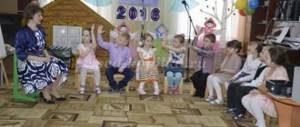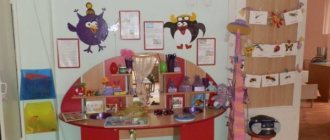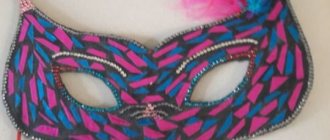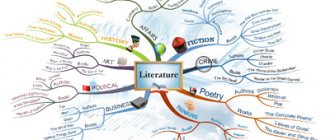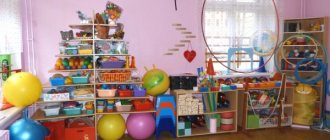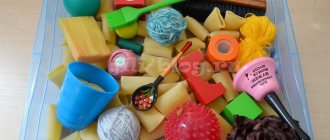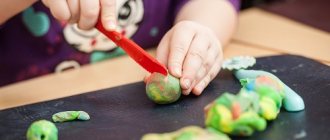“Health-saving technologies in correctional work with children with disabilities”
Author: Kidnyaeva Oksana Nikolaevna
“Health-saving technologies in correctional work with children with disabilities”
The work of a teacher today should be aimed at improving the health of a child with disabilities and promoting a healthy lifestyle. It is no coincidence that these are the priority tasks in the program for the modernization of Russian education. One of the means of solving these problems is health-saving technologies, without which the pedagogical process of modern education is unthinkable. Understanding the need to work to form, strengthen and preserve the health of their students, the teachers of our group purposefully work to create a favorable health-preserving space, looking for methods and techniques that are adequate to the developmental characteristics of children with mental retardation. Preserving and promoting health, both during direct educational activities and in free time, is especially important for children with disabilities. These children, as a rule, differ from their peers in terms of physical and neuropsychic development. They are characterized by emotional excitability, motor restlessness, instability and exhaustion of nervous processes, easy excitability, lethargy, lack of long-term volitional efforts, etc. Therefore, a defectologist, speech therapist, special education teacher, music director and other teachers working with such children have to correct only a defect, but also to normalize the mental and physical state of the child. The use of health-saving technologies helps solve this problem. It is no coincidence that correctional pedagogy is also called therapeutic.
“Health-saving technology” is a system of measures that includes the interrelation and interaction of all factors of the educational environment aimed at preserving the health of a child at all stages of his learning and development. The concept of education provides not only for the preservation, but also for the active formation of a healthy lifestyle and the health of students. Health-saving educational technologies are the most significant among all known technologies in terms of the degree of influence on children’s health. Their main feature is the use of psychological and pedagogical techniques, methods, and approaches to solving emerging problems.
They can be divided into three subgroups: organizational and pedagogical technologies that determine the structure of the educational process, helping to prevent states of overwork, physical inactivity and other maladaptive states;
psychological and pedagogical technologies related to the direct work of the teacher with children;
educational technologies, which include programs for teaching how to take care of one’s health and creating a culture of health among students.
Here are some modern health-saving technologies that we
We use in our work:
Corrective technologies
Art therapy.
Treatment with art and creativity captivates children, distracts them from unpleasant emotions, and taps into the body’s emotional reserves. This includes working with natural materials - clay, sand, water, paints.
Art therapy techniques
helping to relieve nervous tension and
connect the internal reserves of the child’s body such as: colorful painting with fingers on sand, cereals (semolina, oatmeal, peas, etc.)
Fairytale therapy.
Fairy tales are a favorite genre for children. Fairytale therapy is used for psychotherapeutic and developmental work. The story can be told by an adult, or it can be a group story. We not only read fairy tales, but also discuss them with children. Children love to “personify” them and play with them. To do this, we use puppet theater and role-playing games in which children transform into various fairy-tale characters. Through a fairy tale, you can learn about children’s experiences that they themselves are not really aware of, or are embarrassed to discuss with adults.
Psycho-gymnastics
- relieving emotional stress. Exercise children in the ability to expressively and emotionally depict individual emotions and movements. First of all, such activities are indicated for children with excessive fatigue, exhaustion, and restlessness; for hot-tempered, withdrawn children with neuroses, character disorders, mild mental development delays and other neuropsychic disorders, Psycho-gymnastics helps children overcome barriers in communication, better understand themselves and others, relieve mental stress, and provides the opportunity for self-expression. Used in direct educational activities. Facial expressions are closely related to articulation. The depiction of various emotions on the face contributes to the development of not only facial, but also articulatory motor skills in the child.
SU-JOK therapy
, being highly effective, safe and simple, is based on traditional acupuncture and is a fairly good self-healing system. The combination of su-jok therapy and exercises such as finger gymnastics, self-massage with exercises for correcting sound pronunciation and the formation of lexical and grammatical categories can significantly increase the effectiveness of correctional classes.
Also in our work we use elements of the pedagogical system of Maria Montessori. The Montessori method is a unique author’s system of self-development and self-education for children. The main attention here is paid to the development of fine motor skills, sensory organs and the development of independence in the child. The key principle in Montessori pedagogy is “Help me do it myself.” That is, the teacher must figure out what the child is interested in, provide him with an appropriate environment for studying and teach the child to use it. An adult helps the child to reveal the abilities inherent in him by nature, as well as to go through his own path of development.
In our work, we pay special attention to the development of fine motor skills, the goals of which are to increase the performance of the cerebral cortex and develop the child’s active speech.
To develop fine motor skills, we use finger gymnastics, games with natural, waste materials (pools made of peas, beans, etc.), as well as games with various aids (laces, mosaics, puzzles, etc.).
The development of fine motor skills is carried out daily, at any convenient time, as well as in direct educational activities.
Thus, each of the technologies considered has a health-improving focus, and health-saving activities used in combination ultimately form the child’s habit of a healthy lifestyle.
comments powered by HyperComments
Application of health-saving technologies in working with children with disabilities
Game recreational gymnastics
It is carried out daily after a nap for 5-10 minutes, usually in the junior level. Her complex includes exercises on beds for awakening, exercises for correcting flat feet, cultivating correct posture, and extensive washing. For preventive purposes, you can make a rug with buttons. Children enjoy walking on it after a nap. The path perfectly massages the feet, strengthens the muscles and ligaments of the foot, protecting the body as a whole.
2. Technologies for teaching a healthy lifestyle:
Morning exercises
carried out daily for 7-10 minutes. Morning exercises begin with warming up the body through movements. We teach you to move independently and with pleasure. We compose the complex so that the movements are aimed at warming up all the joints of the body, the spine, and various muscle groups. Be sure to include breathing exercises. Thus, morning warm-up is an act of communication and unity. The warm-up complex includes elements of self-massage (massage of the wings of the nose - this exercise is used to prevent colds).
Health Lesson Series:
“Rainbow of Health”, “Advice from Doctor Aibolit”, “How to become Hercules”, “Meeting with Moidodyr” and others. The cycles of these classes are aimed at developing children’s ideas about a healthy lifestyle. Children develop the concept that each person should take care of their own health, and their understanding of how to take care of maintaining health expands.
Self-massage
- This is a massage performed by the child himself. It improves blood circulation, helps normalize the functioning of internal organs, and improve posture. It contributes not only to the physical strengthening of a person, but also to the improvement of his psyche. Self-massage is carried out in a playful way every day in the form of a dynamic pause in class. Funny poems, vivid images depicting massage movements, their simplicity, accessibility, and the ability to use in different settings and at any time contribute to changing the child’s position from an object to a subject of pedagogical influence, and this is a guarantee of the success of rehabilitation, correctional and developmental work.
Leisure
– this is physical education leisure, sports and recreational holidays, “Health Days”, sports relay races. When spending leisure time and holidays, all children are involved in direct participation in various competitions, competitions, and enthusiastically perform motor tasks, while children behave more directly than in physical education classes, and this looseness allows them to move without much stress. At the same time, those motor skills and abilities that they have already firmly mastered are used, so children display a kind of artistry and aesthetics in their movements. Physical education holidays and leisure activities can be accompanied by music: this has a beneficial effect on the development of children’s sense of beauty, strengthens the ability to move to music, understand the nature of a musical work, and develops an ear for music and memory. Our school site has sports equipment that allows children to achieve maximum physical activity during their walks.
Health-saving technologies in working with children with disabilities at a boarding school
GBOU RH "Montenegrin Special (Correctional) Boarding School
Ustyantseva Nona Dzhemalevna, teacher
Health-saving technologies in working with children with disabilities in a boarding school.
Currently, every teacher should know that training, education and health are inextricably linked categories that influence each other. Focus on health-saving technologies in education and training is one of the main and urgent tasks of the entire education system. Protecting the health of children can be called a priority activity not only in the field of special education, but of the entire society, since only healthy children are able to properly assimilate the acquired knowledge and in the future are able to engage in productive and useful work. Children with health problems have difficulty learning. Therefore, taking care of the health of students is the most important responsibility of the school, the teacher and the child himself. Often, children with disabilities have no interest in health-improving activities, because the necessary rules of a healthy lifestyle require significant volitional efforts, which is extremely difficult for children with impaired intelligence and emotional-volitional disorders.
In our school, health-saving technologies (HST) can be considered as the technological basis of health-saving pedagogy - one of the most promising systems of our century, and as a set of techniques, forms and methods for organizing the training and education of students, without compromising their health.
The goal of health-saving technologies of the school is boarding school
- provide the pupil with the opportunity to maintain health during the period of study at the boarding school, develop in him the necessary knowledge, skills and abilities regarding a healthy lifestyle, teach him to use the acquired knowledge in everyday life.
In health-saving technologies of training and education, two groups of methods are used:
specific (characteristic only for the process of pedagogy of health improvement) and general pedagogical (used in all cases of training and education). Only an optimal combination of these methods in accordance with methodological principles can ensure the successful implementation of a set of tasks of health-saving teaching technologies.
Health-saving technologies of training and education in a correctional boarding school are implemented on the basis of a person-oriented approach and are carried out on the basis of personally developing situations. They belong to those vital factors thanks to which pupils learn to live together and interact effectively; they imply the active participation of the child himself in mastering the culture of human relations, in the formation of health-preserving experience, which is acquired through the gradual expansion of the student’s sphere of communication and activity, the development of his self-regulation (from external control to internal self-control), the formation of self-awareness and an active life position based on education and self-education, the formation of responsibility for one’s health, the life and health of other people. Following the concept of health-saving education, the teaching staff of the boarding school includes the following areas in the work plan:
Report on the topic: “Use of health-saving technologies in working with children with disabilities”
State budgetary special (correctional) educational institution for students and pupils with disabilities "Almetyevsk special (correctional) general education boarding school of the VI type"
Generalization of work experience.
Topic: “Use of health-saving technologies
in working with children with disabilities."
Prepared by the teacher:
Denisova P. A.
ALMETYEVSK, 2011
The world in which a child lives and is raised is characterized by constant updating of information; it is dynamic and changeable. Such conditions dictate the need for a little person to see his goals, take initiative, design, build social connections and quickly join temporary teams, and we, adults, need to help him with this by using modern educational technologies in educational activities.
Modern educational technologies also include those aimed at preserving the health of children. Health is a state of complete physical, spiritual and moral well-being. But it is a known fact that a huge percentage of students in educational institutions lose their health if the learning process is organized incorrectly or not organically enough. Therefore, from my point of view, great attention should be paid to health-saving technologies.
The choice of health-saving pedagogical technologies depends on the program in which teachers work, the specific conditions of the educational institution, the professional competence of teachers, as well as indications of morbidity in children.
The forms of organizing health-saving work are: physical education classes, independent activities of children, outdoor games, morning exercises (traditional, breathing, sound), motor-health-improving physical education minutes, physical exercises after naps, physical exercises in combination with hardening procedures, physical exercise walks (to the park , to the stadium, to the forest), physical education, sports festivals, health treatments in the aquatic environment.
Health-saving educational technologies can be divided into three subgroups:
- Organizational and pedagogical technologies that determine the structure of the educational process, helping to prevent overwork, physical inactivity and other maladaptive states;
- Psychological and pedagogical technologies related to the direct work of the teacher with children;
- Educational technologies, which include programs for teaching about one’s health and creating a culture of health.
Our institution uses the following modern health-saving technologies:
1. Technologies for preserving and promoting health:
rhythmoplasty, dynamic pauses, outdoor and sports games, relaxation, aesthetic technologies, finger, eye, breathing, invigorating, corrective and orthopedic gymnastics.
2. Technologies for teaching a healthy lifestyle:
Physical education class, problem-based games (game training and game therapy), communicative games, classes from the “Health” series, self-massage.
3. Corrective technologies:
Art therapy, musical influence technologies, fairy tale therapy, color influence technologies, behavior correction technologies, psycho-gymnastics, phonetic and speech therapy rhythms.
The most important section of prevention is the formation of a healthy lifestyle, including education from early childhood on the correct attitude towards one’s health and the health of others.
The acquisition of personal hygiene skills by schoolchildren plays an important role in the prevention of a number of diseases.
A fairly high level of domestic and street injuries, water accidents, which can lead to severe injuries and sometimes death of children, requires children themselves to strictly adhere to the basic rules of injury prevention and thorough knowledge of first aid in case of accidents.
The assimilation and application by students of hygienic knowledge of correct sitting at a desk will undoubtedly help prevent the occurrence and development of incorrect posture and myopia.
Active movements increase the child’s resistance to diseases and mobilize the body’s defenses.
In the extended day group we comply with sanitary and hygienic standards and carry out preventive measures to maintain a healthy lifestyle.
In order for children to be healthy, we use health-improving activities, conduct physical education and active sports - sports games.
Also, one of the forms of work to protect children’s health is conversation. I held conversations on the following topics: “Healthy sleep”, “If you want to be healthy, harden yourself”, “A healthy mind in a healthy body”, “Your health is in your hands”, “Health is wealth for all time”, etc. . These conversations yielded positive results; students learned important terms and concepts.
Students really like it when activities are organized with them in the form of a project. For example: the project “Take care of your health from a young age”, “Proper nutrition”.
Students are always active in class and complete all creative tasks in an organized manner. At the end of each event, students draw conclusions for themselves that each person must remember that his health largely depends on himself. You need to be able to control yourself and have fortitude. And only then will a person be healthy if he can say no to bad habits. After all, being a healthy person is important!
The integrated use of recreational activities in an extended day group can reduce fatigue, increase emotional mood and performance, and this in turn helps to maintain and strengthen the health of students.
I hope that all forms of health-saving technologies with children that I use make the daily life and activities of schoolchildren varied and meaningful. These health-saving technologies help me solve the problems and goals of health education among schoolchildren.
Thus, it is very important that each of the technologies considered has a health-improving orientation, and health-saving activities used in combination would ultimately form a strong motivation in the student for a healthy lifestyle, full and uncomplicated development.
Bibliography:
- Smirnov N.K. Health-saving educational technologies in a modern school. – M.: APK and PRO, 2002.
- Tverskaya N.V. Health-saving approach to the development of student success // Education in a modern school. - 2005.
- Kovalko V.I. Health-saving technologies (grades 1-4). Moscow: Vano, 2004.
- Akimova M.K., Kozlova V.T. Psychophysiological characteristics of the individuality of schoolchildren. Accounting and correction. – M.: Education, 2002.
Distance learning and health-saving technologies when working with children with disabilities
Health-saving technologies in the process of distance learning for disabled children and children with disabilities
Fedorenko Svetlana Gennadievna,
primary school teacher of the highest qualification category
MBOU "Secondary School No. 39" Smolensk
Article 51 of the Federal Law “On Education” identifies children’s health as a priority area of social policy in the field of education. Preserving and strengthening the health of disabled children and children with limited health capabilities is an important problem, the solution of which requires great professionalism and highly trained teaching staff.
Of course, health-saving technologies in the educational process using distance learning technologies should be comprehensive. A teacher who teaches a disabled child remotely should study the psychophysiological characteristics of the student, the nature of his illness, and individual characteristics. During a distance lesson, any impact on a sick child is important, since even minor external factors can have a detrimental effect on the child’s health.
Physical education minutes
and physical education breaks are a mandatory component of a distance lesson with disabled children. In his arsenal of tools, a teacher simply must have a sufficient number of sets of exercises, during which it is necessary to take into account the child’s illness, his well-being in a given lesson, his mood and desire to perform them. Carrying out physical education minutes supports students’ performance and provides rest for the central nervous system, as well as skeletal muscles that experience static tension due to prolonged sitting while working on a computer. The duration of physical education minutes is 1.5-2 minutes. Most teachers, working individually in the Skype program, do not monitor the student’s posture and do not remind the child to keep his back straight, if possible. Working on a computer creates a risk of decreased vision, so the teacher must remember that according to established standards, the distance to the monitor must be at least 30 centimeters, and the level of the monitor corresponds to the location of the child’s eyes.
No less important is a favorable psychological climate during a distance lesson, which serves as one of the indicators of its success. A favorable psychological climate in the lesson is achieved by spending minutes of emotional release, by, for example, telling short funny or interesting sketches on the essence of the material presented or organizing work on the computer in general, or a “minute of peace” using music and showing presentations with views of nature, animals and etc.

